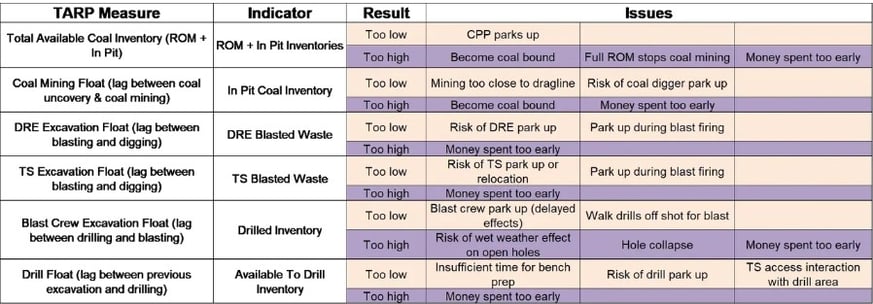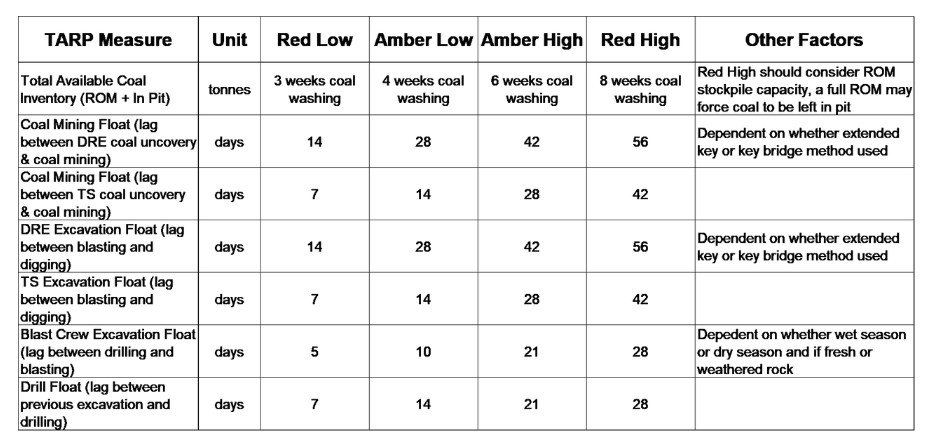4 Inventories – What Should The Target Bands Be?
Mark Bowater
12/17/2024


This is my fourth article in a series on mine scheduling and if you haven’t read the earlier articles, I’d recommend you read those first. They are written in collaboration with Paul Ahern from ADBS and his articles make for good reading.
So, who says you can’t teach an old dog new tricks?!
I’ve always believed we should be scheduling to maintain inventories within target bands, as discussed in my previous article and that’s why this article is titled as it is. However, after further consideration of the Theory of Constraints and feedback on my previous articles, I’ve changed the focus from managing inventories, to managing float. What is float (or we can also use the term lag)? Float is the time available between the completion of an activity and the required start time for the immediately following activity. So it is a measure of how much spare time is built into your schedule, which is then a measure of how risky your schedule is.
So how do you decide on the target bands for floats? I have just been through this process for a very large open cut coal mine and here is how I went about it.
The first step was to identify and list all the outcomes that could result from the float being too low and also too high. This mining company uses a TARP process (trigger action response plan) for addressing various mine site risks, mine planning being one of them. The first column of the table lists the mine schedule measures I selected as those for which ranges should be defined and monitored. Then with each of those measures, I mapped out issues that occurred if the actuals for that measure were too low or too high, so outside of an acceptable range. This is not a comprehensive listing as I don’t know the mine site in detail, but is a generic list of issues that typically occur.


With an understanding of the potential outcomes from the actual float being too low or too high, it then allowed me to think about at what level does there become a likelihood that this outcome may occur. Based on many years of mining experience, I arrived at a set of numeric results for each measure at which issues were likely to occur. This mine site operates on an amber and red TARP process, where the red TARP is the critical point where risk becomes unacceptable. The amber TARP is primarily an early indicator that if the trend is not reversed then it will move into the red TARP and so to commence some form of correcting action. So in this process, the critical issue her is to identify the red TARP values first, then identify amber TARP values at which time the measure will be highlighted for correctional action.
The table below details the amber and red TARP values that I recommended to this mine site. In the table below, if the measure sits between the Amber Low and Amber High numbers, then it is green and no action is required. So for example:
· If the total available coal inventory is between 4 weeks and 6 weeks coal washing, the measure is green and no action is necessary.
· If the total available coal inventory is between 3 weeks and 4 weeks coal washing, the measure is in the Amber Low area and action is required to increase the inventory back to the green level. This could include minor equipment resequencing, or delay of equipment planned maintenance.
· If the total available coal inventory is less than 3 weeks coal washing, the measure is in the Low Red area, corrective activities used to date have not worked and more aggressive action is required to increase the coal inventory. This could include major equipment resequencing, hire of additional equipment, or construction of new coal access.


I hope this article is of assistance. I would point out that I have used a fairly subjective process and years of mine scheduling experience to arrive at the numbers in the table above. As an engineer, I don’t like subjective processes and would much prefer an objective and analytically driven process to arrive at the acceptable ranges. So I’m keen to hear from others as to the process they use to come up with acceptable ranges.
Expertise
Dedicated to excellence in mining consulting services.
Integrity
Innovation
admin@insigniamining.com
+61 402 733 439
INSIGNIAMINING© 2024. All rights reserved.
